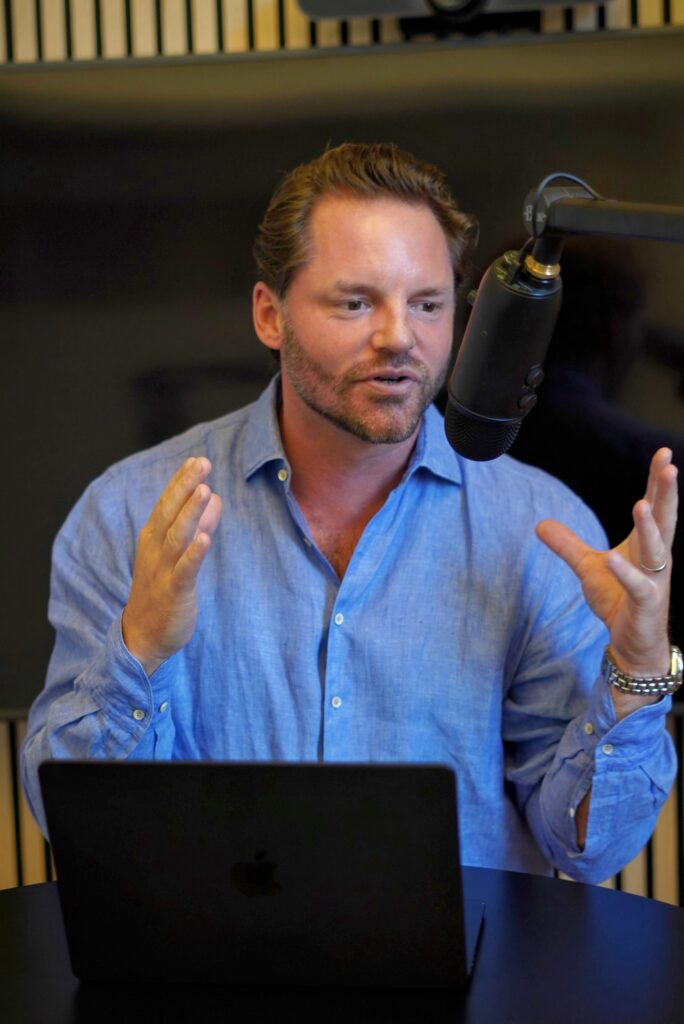Fintech Tides Podcast | Episode: 6
Uncovering the business potential of open banking.
In this interview, Fredrik Rubin, Head of Sales at Finshark, shares his perspectives on how open banking is transforming industries, boosting efficiency, and offering safer payment methods. As an expert with over 15 years of experience scaling global tech companies, Fredrik explores the customer demand for open banking and how businesses can leverage it to gain a competitive edge.
In this episode, you will hear us discuss:
- Why fintech? Fredrik Rubin’s journey into open banking.
- Open banking in action: key industry transformations.
- Top pain points solved by open banking.
- Gaining a competitive edge: faster settlements and lower fees.
- The future of payments: how open banking is reshaping transactions.
- The growing role of Financial Crime Prevention (FCP) in open banking.
- Navigating business challenges and educating the market.
- Final thoughts: open banking’s continued growth and adoption.

Why fintech? Fredrik Rubin’s journey into open banking.
Fredrik Rubin has over 15 years of experience in building commercial organizations, primarily in tech. He was first introduced to open banking by a competitor of Finshark and was instantly intrigued. “We all handle money every day, and fintech is about shaping the future of that process,” Fredrik shares. From the very beginning, he saw open banking as the future of financial transactions, especially as the world transitions away from physical cash to digital financial systems.
Open banking in action: key industry transformations.
Fredrik highlights two industries that have embraced open banking with enthusiasm: iGaming and e-commerce. He explains that in the competitive world of online gaming, open banking has become a new standard, particularly for deposits and withdrawals. Similarly, e-commerce is steadily adopting open banking as a more efficient and cost-effective solution. “iGaming was an early adopter, and it’s only a matter of time before other industries follow,” he notes.
Top pain points solved by open banking.
When speaking with potential customers, Fredrik often encounters five key pain points that open banking can solve:
- High fees: Businesses are always seeking to reduce costs, and open banking provides a more affordable alternative to traditional payment methods.
- Poor user experience: Open banking offers a seamless, faster payment experience, improving customer satisfaction and increasing conversions.
- Slow settlement speeds: Traditional payments can take 2-3 bank days. Open banking enables faster, often instant settlements.
- Conversion rates: With open banking, the friction in the buyer’s journey is reduced, leading to higher conversion rates.
- Competitive edge: Open banking allows businesses to differentiate themselves in crowded markets by offering better payment solutions.
The competitive edge: faster settlements and lower fees.
In competitive industries, every percentage counts. Open banking not only saves on transaction fees but also improves cash flow with faster settlement times. Businesses no longer need to wait for days to receive their money, giving them a crucial competitive edge. Fredrik emphasizes the growing demand for real-time payments, particularly for high-ticket items like cars, boats, or even luxury goods.
The future of payments: how open banking is reshaping transactions.
Fredrik sees a future where fewer payment methods dominate, and open banking is at the forefront. He predicts that as technology continues to advance, consumers will demand fewer, more secure, and reliable payment methods. The growing adoption of mobile BankID in Sweden is a perfect example of how convenient and secure open banking can be, setting a new standard for user expectations.
The growing role of financial crime prevention (FCP) in open banking.
As open banking grows, so does the need for financial crime prevention (FCP). While businesses are primarily concerned with costs and conversion rates, Fredrik notes that the importance of Know Your Customer (KYC) and anti-money laundering (AML) measures is rising. With open banking, companies can track every transaction, offering greater transparency and security, a feature that’s becoming increasingly critical as financial regulations tighten.
Navigating business challenges and educating the market.
Not all industries are fully aware of the benefits open banking offers. Fredrik explains that some sectors, like insurance or automotive dealerships, are still catching up to the trend. However, industries with high volumes of transactions, such as e-commerce and iGaming, have already realized the value of open banking. The key to driving adoption is education. Fredrik emphasizes the importance of being patient and guiding customers through the learning curve, especially for more traditional companies.
Open banking’s continued growth and adoption.
Fredrik concludes by noting that while open banking is still gaining traction, its adoption is inevitable. As more industries embrace digital payment solutions, the demand for open banking will continue to rise. For Fredrik, it’s not just about helping businesses today—it’s about preparing them for the future.